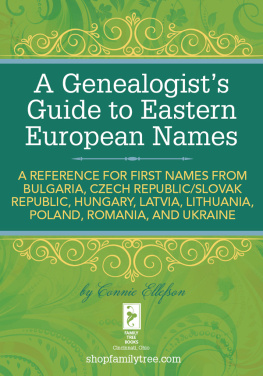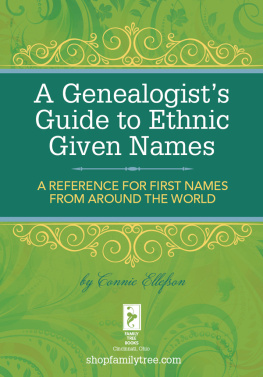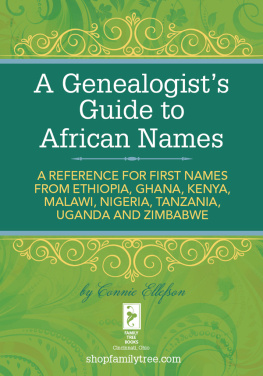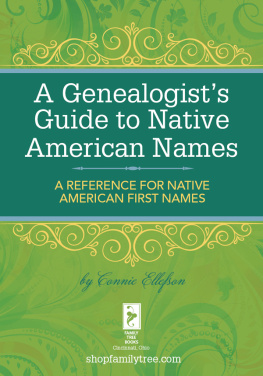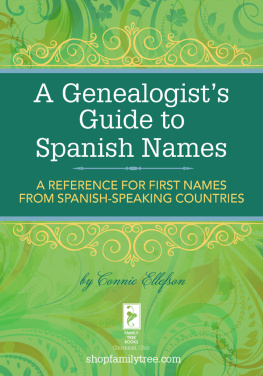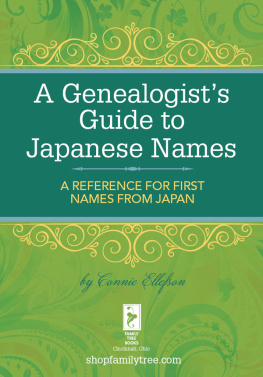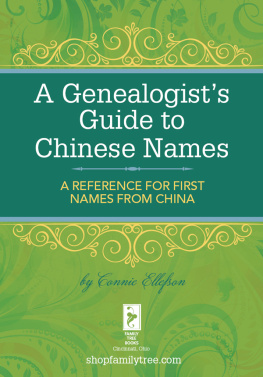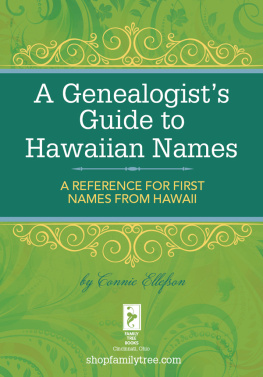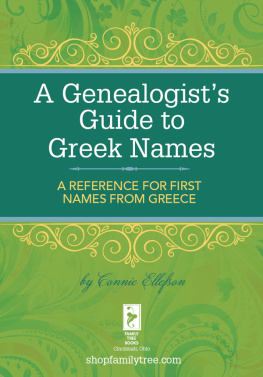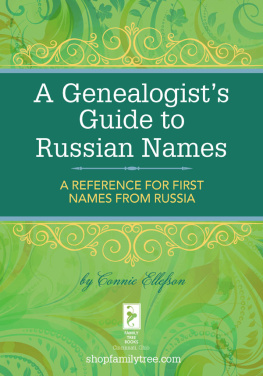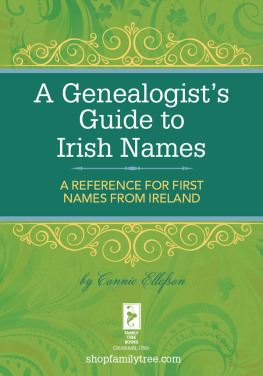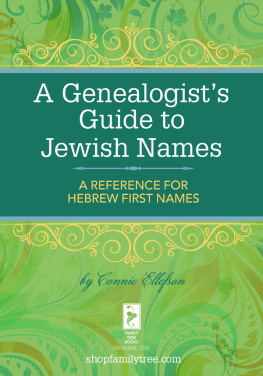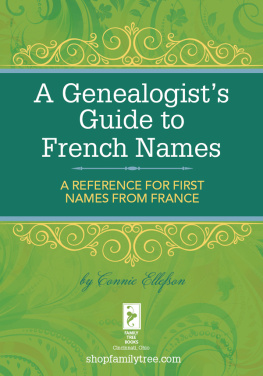A Genealogists Guide to Eastern European NamesA REFERENCE FOR FIRST NAMES FROM BULGARIA, CZECH REPUBLIC/SLOVAK REPUBLIC, HUNGARY, LATVIA, LITHUANIA, POLAND, ROMANIA, AND UKRAINEby Connie Ellefson
Cincinnati, Ohio shopfamilytree.com
Bulgaria
History
Bulgarian Americans emigrated from present-day Bulgaria and the surrounding areas in the Balkan Mountains, primarily before World War I. Many arrived from the historic region of Macedonia in northern Greece and southern Yugoslavia. Economic hardship and overpopulation were the spurs for immigration, as well as reprisals from a failed Macedonian revolt against ruling Turks in 1903. An estimated 50,000 Bulgarians immigrated between 1900 and 1910. Almost exclusively, they were single men, unskilled laborers seeking to earn enough money to return home and buy land or open a small business. Most of those who stayed settled in the Midwest; the largest number of Bulgarian Americans is in Michigan (10,000) and nearby states.
Between 1910 and 1929, the number of returnees exceeded the number of new immigrants. In 1924, quota restrictions limited Bulgarian immigrants to 100 per year. Between then and 1965, when the restrictions were lifted, 7,660 Bulgarians came to the U.S., although many more entered illegally or on non-Bulgarian passports. During the years between the two World Wars, most immigrants were women and children joining husbands and fathers who had decided to stay in the new world. During the 1900s to 1930s, Bulgarian Americans established boorts and kafenes for socializing. A boort was a simplified version of the English boardinghouse.
A Bulgarian family would rent two big rooms to as many as twelve boarders. They would use one room as sleeping quarters and the other as living room, kitchen, dining room and recreation area. The immigrants would often work at the same factory, perhaps on different shifts, using the same beds at different times. Many came from the same place in the old country as relatives or friends. The kafene (coffeehouse) was a social club and place for recreation on days off from work. a few years and was able to interpret local customs and laws, as well as serve as a broker of jobs for new immigrants. a few years and was able to interpret local customs and laws, as well as serve as a broker of jobs for new immigrants.
Many of the first immigrants acquired brides on visits home or through plans by friends and relatives. These mail bride marriages were often happy and successful because of the similarity in background and careful groundwork laid by parents of both parties.Although second-generation Bulgarian Americans were often eager to assimilate into American culture, this drive wasnt universal. In some cases, love and respect for ones family and the heritage of the homeland was stronger than the desire to become Americanized. In the third generation, there was even more interest in Bulgarian heritage. As many as fifty Bulgarian American newspapers have existed, bringing news of the homeland, encouraging pride and knowledge in the native culture. Recent immigrants included refugees and political opponents of the Communist government in Bulgaria.
Most have college degrees. Approximately 70,000 Bulgarians and their descendants live in the U.S. today. Most Bulgarian Americans are Eastern Orthodox Christians, and the church remains a center of community life. Parishes hold social events, and sponsor schools where Bulgarian and English are taught.
Language
The Bulgarian language is a distinct south Slavic language written in the Cyrillic alphabet.
During the Middle Ages, Old Bulgarian (also known as Church Slavonic) was one of the chief literary languages of Europe, along with Latin and Greek. Bulgarian is most closely related to the Slovene, Macedonian and Serbo-Croatian languages of (former) Yugoslavia. The presence of many Russian, Greek and Turkish words in the language reflects the past when those countries invaded and took over Bulgaria at various times.
Naming Traditions
It hasnt been as strictly observed in the past ten to twenty years, but it used to be a Bulgarian tradition that babies were named for their grandparents. It was particularly important to a new father that a son be named after his grandparents, although a baby girl might be named after her maternal grandmother. This practice tended to keep old-fashioned names in use.
During the Communist occupation of Bulgaria, babies were not allowed to be given foreign names unless the parents were Jewish, Armenian, or of some other foreign origin. Parents had to pick from a list of approved names. Children are often given diminutive names. Stujan, for instance, will be called Stujancho during his childhood. A little girl will have the suffix -ka added to her name when someone is speaking of her (Liliana becomes Lilianka) and will have -ke or -che added when someone is speaking to her (Lilianke or Lilianche). Many nicknames are used among friends.
For girls, names of flowers are very popular; a group of names for boys represents tree names. Bulgarians celebrate name days, as in many Slavic cultures, as ceremoniously as birthdays, and the name day of the person whose name is from a tree or flower is celebrated on Palm Sunday (the Sunday before Easter). In Bulgarian, Palm Sunday is known as Tsvetnitsa from tsvete, which means flower.
Pronunciation
a = ah as in ball ai = ay as in day e = e as in hen oi = o-ee o = o as in hot, never as oh i = i as in bit; ee at the end of a word ii = ee as in feel tsv = tsv as pronounced in English
Bulgarian Female Names
Ana (H) grace
Ekaterina (Gr) pure
Elena (Gr) light
Elissaveta (H) consecrated to God
Fidanka sapling
Gabriela(H) God is my strength
Gerganaearthworker, farmer
Iglika primrose
Iordanka (H) descendant
Irina (Gr) peace
Iulia (L) youthful
Ivanka (H) Gods gracious gift
Joana (H) Gods gracious gift
Khristina (HRIS-tee-nah) (Gr) Christian
Krassimira unknown meaning
Liliana lily; Lilianka, Lilianke, Lilianche,Lili
Lora (L) crown of laurels
Magdalena (H) woman of Magdala
Margarita (Gr) a pearl, flower name for daisy
Maria (H) bitter; Marika, Mariike, Marii
Nataliia (Fr) born at Christmas
Nikol (Gr) victory of the people
Pavlina (L) little
Radka joy; Rada, Radha, Radostina, Raika, Raina
Raya (H) friend
Rossitva from rossa (dew)
Simona(H) God is heard
Sofia (Gr) wisdom
Stefana (Gr) a crown
Temenuzhka violet
Teodora (Gr) divine gift; Todorka
Tsvetanka flower, refers to Palm Sunday
Viktoria (L) victorious
Violeta violet
Bulgarian Male Names
Aleksandar (Gr) defender of mankind; Alekko, Sander, Aleksandur
Andrei (Gr) manly; Andrey
Atanas (Gr) immortal
Boian unknown meaning; Bioancho
Daniel (H) God is my judge; Danail
DimitarNext page
